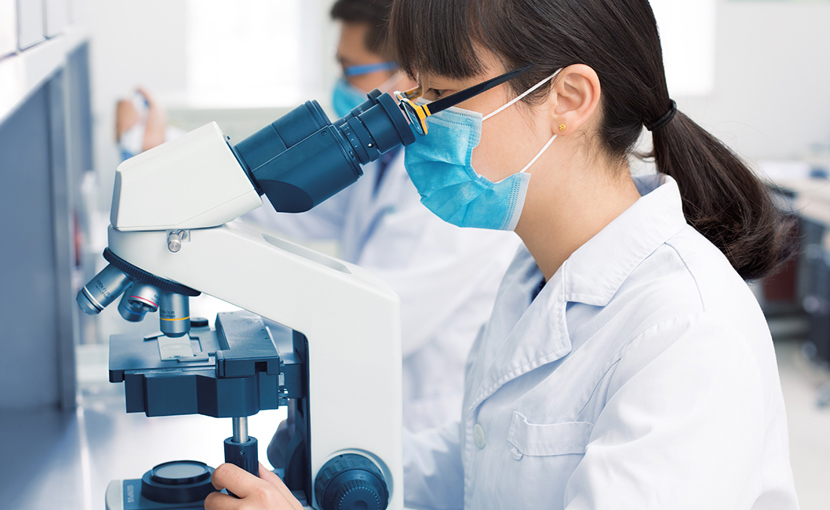Microbiologists study the biochemical, physiological, and genetic aspects of micro-organisms, and how they interact. In general, they:
- Help develop hazard assessments of planned work with micro-organisms to protect staff from exposure and the environment from accidental release
- Work in or create sterile conditions
- Study human, animal, or plant diseases caused by micro-organisms
- Conduct experiments to isolate and grow cultures of micro-organisms under controlled conditions
- Transfer micro-organisms from one culture medium to another without contaminating samples
- Isolate, analyze, and genetically manipulate nucleic acids, proteins, and other substances produced by micro-organisms
- Perform tests on water, food, and the environment to detect harmful micro-organisms and to control sources of pollution and contamination
- Perform tests on clinical samples to detect and characterize pathogens
- Observe, identify, and classify micro-organisms
- Isolate and genetically modify micro-organisms involved in breaking down pollutants
- Develop genetically modified microbes for use in the production of genetically engineered biological products (proteins), or for gene transfer
Microbiologists use a range of specialized equipment. Depending on the task, they could be working with incubator-shakers, fermenters, autoclaves, light and electron microscopes, epifluorescence, or confocal microscopes. Other applications may call for centrifuges, gas chromatographs, high-pressure liquid chromatographs, mass spectrometry, electrophoresis units, thermocyclers, DNA sequencers, fluorescence-activated cell sorters, or phosphorimagers.
Microbiologists work in wide-ranging fields of study, including:
- Bacteriology in general or a particular aspect of bacteriology, such as public health bacteriology, pharmaceutical bacteriology, and hospital or clinical bacteriology
- Environmental microbiology, including pollutant bioremediation
- Food microbiology
- Biotechnology (for more information, see the Biotechnologist occupational profile)
- Immunology (immune reactions in humans or animals)
- Medical or clinical microbiology
- Microbial ecology (for related information, see the Ecologist occupational profile)
- Molecular microbiology, meaning how bacteria or viruses function at the molecular level
- Eukaryotic microbiology, or the study of fungi, parasites, or protozoa
- Virology
Medical and clinical microbiologists help physicians and allied health-care workers diagnose, prevent, and treat infections in animals and humans by:
- Overseeing and leading a clinical microbiology lab in a hospital, a private or public health lab, or an industrial lab
- Providing clinical consultation to physicians from a wide range of specialties, such as family health, critical care, emergency medicine, and respirology
- Providing support to allied health programs that use microbiology services to prevent and control infection, practice antimicrobial stewardship, or provide pharmaceutical or public health services
- Investigating how organisms cause disease, or researching factors that contribute to the occurrence and spread of diseases in populations
- Researching how epidemics can be controlled, and identifying strains of micro-organisms that have become resistant to antibiotics
Some medical and clinical microbiologists work as university professors, where their duties may include:
- Leading and collaborating in research projects into, for example, the study of microbial factors in disease, antibiotic / antimicrobial resistance, and the development of new tests to identify microbes
- Teaching students about microbiology and topics related to infectious diseases
- Sitting on industry and government advisory boards, journal editorial boards, and professional societies
Microbiologists in the food, dairy, and brewing industries may work in quality control, where they propose safe laboratory and manufacturing practices.
Work in microbiology is often interdisciplinary. Microbiologists may work closely with:
- Chemists and biochemists
- Geneticists
- Pathologists
- Physicians and nurses
- Pharmacists
- Infection-control practitioners
- Laboratory technologists
- Public health teams
- Environmental scientists
- Engineers
- Veterinarians
- Geologists


